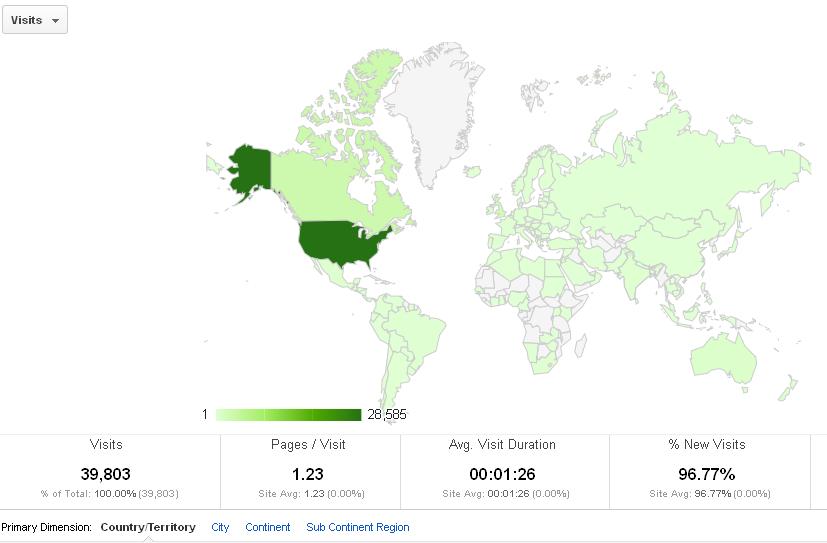
Most bloggers love to look at their ‘stats’ to see information like how many people are visiting, what they’re searching for when they come to the blog, and where in the world they’re coming from. As you can see from the infographic above visitors to Live Well Simply are no exception. They come from almost every nation on earth, apart from a few countries in Central Africa and Central Asia. Apparently Greenlanders haven’t found our blog yet either. But, with a population of only 56,000, that’s not too surprising. Besides, Greenland’s size gets an unfair representation on a flattened world map.
How to Write for a Global Audience
The majority of our visitors are from the US. So, many of the posts we write are aimed at that audience. When we talk about topics like taxes, legal issues and finances, most posts are geo-centric to America. I do try to keep in mind the folks who are from other parts of the world as I write, but as anyone who has traveled some will tell you, us Americans tend to be not only mono lingual, but also somewhat obsessed with only the things that happen within our own borders. The world is so much bigger than the US of A. We need to keep in mind the flattening effect of the internet. For example, did you know that Asia, (not North America) has more people using the internet than any other continent? With this in mind, here are a few ways you can write for a global audience:
1. Include Metric Measurements
The world, apart from the US, runs on Metric. As a Canadian, I got to learn both, so I’m comfortable in both worlds and can make the most common conversions automagically in my head. However, many people around the world might need to open a conversion calculator to figure out the amounts you are referring to, whether its pounds or ounces or yards. It’s a good idea to include the metric measurements in parentheses.
2. Avoid Using Slang or Too Many Idioms
If you’re going to use these, make sure any non-Americans can infer what you mean by the context. I’m reminded of a children’s book I read back in first grade about a hippo, I think it was, looking for his friend at the city dump. Someone had informed him that his friend was ‘down in the dumps’ and he was simply looking for him there! 🙂
3. Interpret Abbreviations and Symbols
Abbreviations and symbols are great. They help us refer to long wordy products, companies or ideas in a short succinct way. However, if you’re going to use these several times in an article you are writing, be sure to included the long version in parentheses the first time you mention it.
4. Watch Your Dates
It’s a best practice to write the full month name instead of just numbers. Example February 4th, 2012 instead of 2/4/2012. Why? Because internationally, 2/4/2012 could mean the 2nd of April, confusing your readers.
5. Use International English
I’m guilty of breaking all of these general rules at times and this one in particular. I love the variety in the English languages, so I enjoy trying out unusual words to add ‘variety’ to my writing. Again, if you’re going to use words, not generally used by international English speakers, make sure they can derive the meaning from the context. This will keep them reading and enjoying your content instead of having to refer to a bilingual dictionary to figure out what you’re saying.
How have you made your blog or website, internationally readable? Feel free to share further ideas in the comments below.